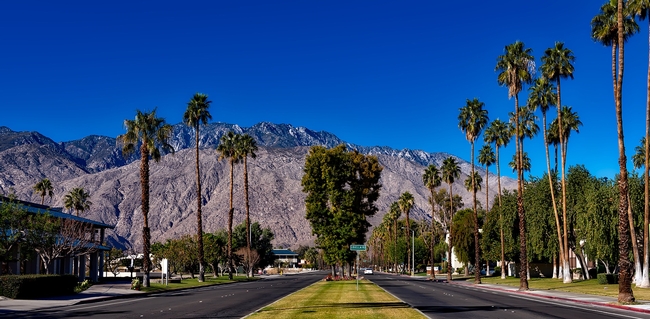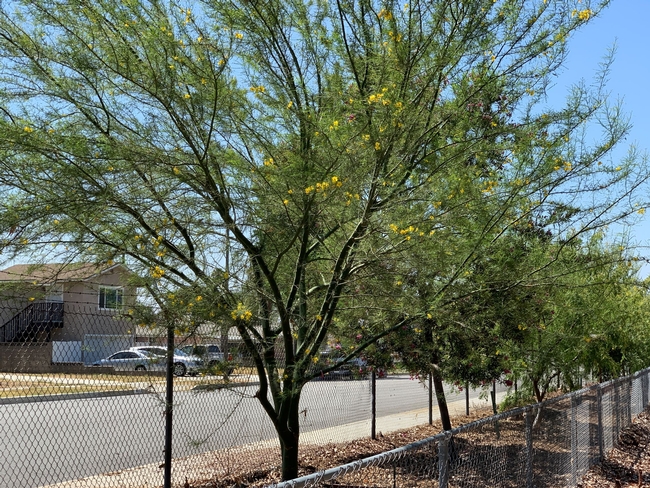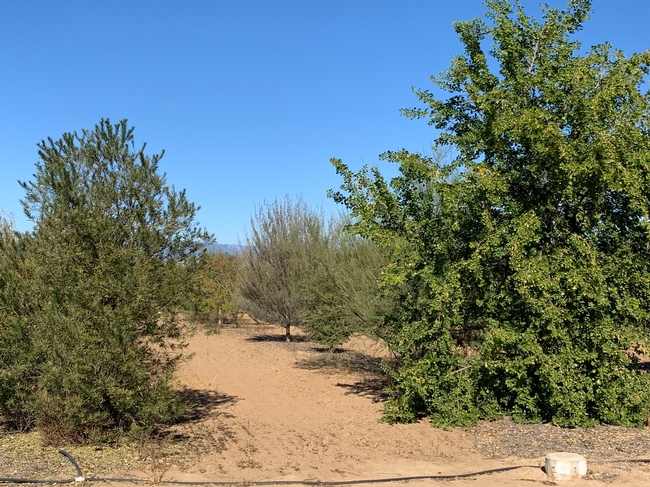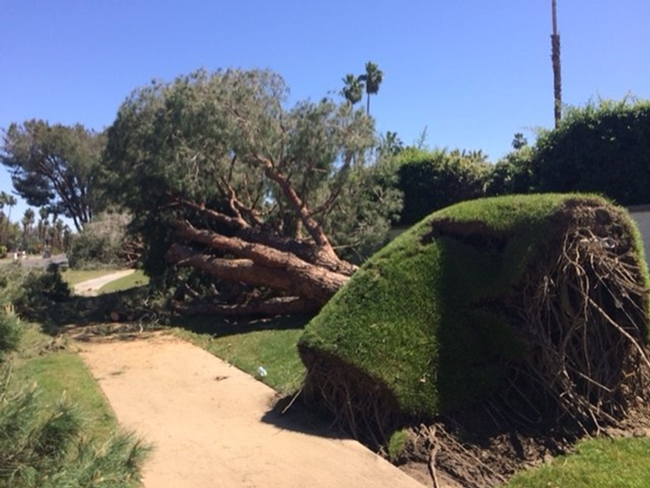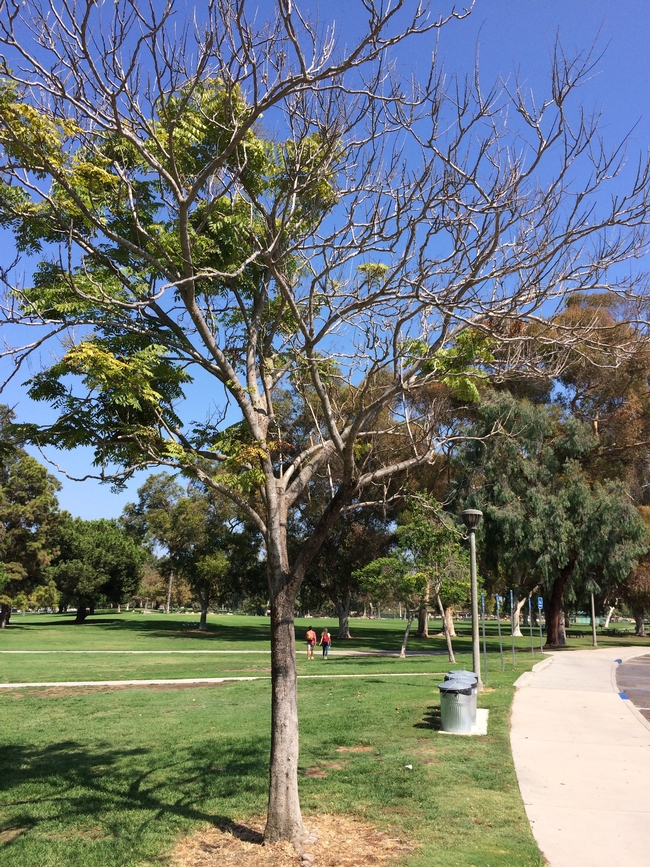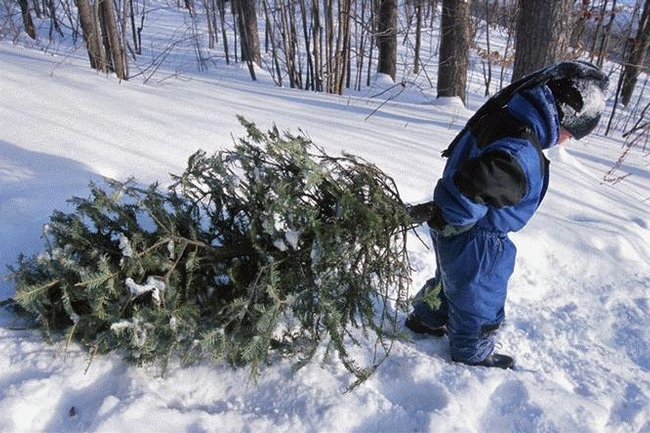Posts Tagged: trees
No need to amend soil when planting new trees or perennials
Gardeners who follow conventional wisdom and nursery recommendations to mix organic amendments into the soil when planting new trees or perennials in their landscapes are making a mistake, according to UC Cooperative Extension environmental horticulture experts.
“This is one of the garden myths that I'm trying to dispel,” said Jim Downer, UCCE environmental horticulture advisor in Ventura County. “We recommend residents not amend the soil when they are planting based on outcomes we have observed in research.”
Downer and Ben Faber, UCCE advisor for water, soils and subtropical crops in Ventura County, summarized this and other information about the use of organic amendments in home landscapes in a six-page publication now available for free download from the UC Agriculture and Natural Resources catalog at https://anrcatalog.ucanr.edu/Details.aspx?itemNo=8711.
The publication says research has not shown that adding amendments to planting holes for perennial plants provides a significant advantage compared to using native backfill.
With perennial plants, the roots do not stay in the planting hole for long, so amendments would only be effective for a short time. The practice of amending the soil further harms the plant by creating an interface where the soil in the planting hole is different from the native soil.
“When that happens, roots and water don't move as well through the soil,” he said.
While there are few reasons to mix organic amendments into the soil, Downer said mulching the soil surface with uncomposted organic matter is almost always beneficial.
“If your goal is to get organic matter into the soil, we recommended topping the soil with fresh, undecomposed wood chips. It will give you microbial stimulation and suppress disease. Arthropods will slowly grab pieces of the mulch and incorporate it into the soil at a gentle rate,” he said.
The publication also provides information about various common organic amendments – such as coconut fiber, coffee grounds, horse manure, peat moss and green waste compost – with details about each product's benefits and detriments.
Lush urban forests can help communities face climate change
Urban trees are much more than lovely greenery and stately landscape features. Scientists believe trees are a key tool for combating climate change and living with warming temperatures in California.
UC Cooperative Extension is bringing together municipal and nonprofit organizations, homeowners associations, contractors, the green industry and educators to increase the tree canopy in urban areas by planting recommended species. Nearly 200 people gathered online in March 2021 to share research results, accomplishments and tree canopy growth strategies at the “Trees for Tomorrow Start Today” workshop.
“We need to act now and together to build community forests,” said Janet Hartin, UCCE area environmental horticulture advisor in Southern California and the event organizer. “This is the time to talk about challenges and opportunities for a healthier tomorrow. As our cities grow, so do associated urban heat islands like asphalt-covered parking lots and streets.”
For decades, temperatures have been rising across the planet. While governments work worldwide to reduce carbon dioxide and other emissions that contribute to the greenhouse gases warming the earth, trees are a particularly effective way to make a significant impact on the problem at the local level.
“With proper placement around homes, trees can reduce home energy cost by 30 to 50 percent,” Hartin said. “Treeless urban parking lots can be 20 to 25 degrees hotter than park-like settings in the same area.”
Trees have myriad additional benefits. They provide cooling shade to sidewalks, schools and shopping centers. Trees remove dust from the air, create windbreaks, capture runoff, reduce glare, muffle urban noise and provide a habitat for birds and other animals. In the process of photosynthesis, trees also absorb and store carbon dioxide, helping reduce greenhouse gas emissions to the atmosphere.
With so many reasons to plant and maintain trees in urban communities, and with the overarching threat of climate change, there's no time to waste in nurturing lush green canopies in California cities, schools, parks and neighborhoods. Hartin said ensuring the proper tree selection, placement and care is critical.
“Trees improperly selected or not properly cared for are taking precious time away from the future benefit of trees,” she said.
UC conducts long-term research to identify the best urban trees
Hartin is working with a team of UC Agriculture and Natural Resources and U.S. Forest Service scientists to identify the best drought- and heat-tolerant trees for different areas of the state. Six years ago, the team vetted 100 trees native to California, the Southwest and Australia, taking into account habitat, physiology and biological interactions. A selection of fast-growing, drought-, heat- and pest-resistant species were planted at UC Riverside, the UC South Coast Research and Extension Center in Irvine and in Northern California to be evaluated over 20 years. In addition, Hartin has a subset of trees in a ‘mulch, no mulch' study at Chino Basin Water District in Montclair.
“We're beginning to see the best performers in those areas,” said Hartin, who shared a few of the tree species that have already caught her fancy.
Island Oak (Quercus tomentella) – A disease-resistant evergreen California native adapted to many Sunset magazine zones and soils.
Netleaf Hackberry (Celtis laevigata var. reticulate) – A deciduous tree with small red berries that attract birds. “This is performing beyond our expectations,” she said.
Thornless Honey Mesquite – (Prosopis glandulosa ‘Maverick') – Native to the Southwest U.S., the tree is heat tolerant and cold hardy. It grows as wide as it is tall – about 35 feet.
Pistacia ‘Red Push' (Hybrid of Pistacia atlantica × Pistacia integerrima) – Developed in Arizona, the tree grows 20-feet tall. “The foliage makes you think of Maine or Minnesota in the fall, but this tree has a brilliant red tinge when it first leafs out in the spring,” she said. “It's performing really well in our studies.”
Bubba Desert Willow (Chilopsis lineraris ‘Bubba') – “My favorite tree from our study,” Hartin said. “It grows fast, has beautiful trumpet-like flowers and requires little maintenance.”
Hartin recommends finding more details about these and other trees at http://selectree.calpoly.edu. Read more about the project here: UC study seeks street trees that can cope with climate change.
UC Master Gardeners provide advice on tree selection and maintenance
Proper location based on climate zone and specific conditions around one's home, planting and maintenance are important for tree longevity. Helpful information and support is available throughout California from UC Master Gardener Program volunteers.
Mandy Parkes of the Inland Empire Resource Conservation District said Master Gardeners are a “pivot point” for successful tree planting. She spearheaded a tree planting program in North Redlands that involves partnerships with the California Climate Action Corps, the city, ESRI, University of Redlands and UCCE to encourage residents to plant trees where the urban canopy is currently low.
“New tree owners need long-term support to aid selection and placement of trees,” Parkes said. “Master Gardeners can weigh in on yard design, irrigation and most importantly, guiding trees into the ground and caring for them correctly and in a way that works for the residents.”
Studies have shown that there is often less tree canopy cover in lower-income communities. In many under-served neighborhoods, canopy cover ranges from 0 to 11%, Hartin said, far short of the recommended 25% canopy cover.
“In wealthier neighborhoods, there tends to be higher canopy cover, and in addition, in those areas there is less asthma and cardiovascular disease,” Hartin said. “Encouraging planting in low-income neighborhoods is one of our goals.”
Andy Lyons, program coordinator for UC ANR's Informatics and GIS Statewide Program and a workshop participant said, “GIS technology and data offer exciting new possibilities for managing our urban trees, including the ability to create highly accurate maps of urban trees from aerial imagery, mobile data collection apps to monitor tree health, and the ability to overlay climate change projections for species selection and planning."
Threats to urban trees
Threats to trees were also discussed at the day-long Trees for Tomorrow meeting. West Coast Arborists' Cris Falco said he is frequently dismayed to see poorly pruned trees. “In my opinion, poor tree work is still the rule, not the exception,” he said.
A common mistake is cutting back, or heading, branches, while the goal should be a natural system of pruning to retain and promote characteristic growth. But, with 90% of the urban forest grown on private property, all too often poor tree architecture or inferior branch structure can lead to early tree failure. Falco and other speakers recommended regular pruning by a certified arborist.
Insect pests and diseases can also get in the way of long-term tree survival. Dave Rogers is a recently retired city arborist and currently acting director of the Community Services Department in Claremont, a college town in eastern Los Angeles County known as the “City of Trees and Ph.D.s.” He said the polyphagous shot hole borer reached Claremont and threated to kill heritage oaks and sycamores. Rogers gathered information and shared it with the city council, who provided $300,000 to treat infested trees. “The treatments worked,” he said.
But the pest continues to threaten trees in Los Angeles and Orange counties. One of the promising trees in the Trees for Tomorrow climate study, the Thornless Desert Museum Palo Verde, was found to be susceptible to shot hole borer, so experts are not recommending residents plant this tree.
Another pest, the ash borer, is in Eastern Texas and Boise Idaho, and will likely make its way to the West Coast eventually, said plantsman and workshop participant Nicholas Staddon of Everde Growers.
“It will kill every single ash tree we have,” said Staddon, who was a plant specialist at Monrovia Wholesale Nursery for many years. “We have to look at a broader diversity of trees. From the growers' perspective, trees are the most expensive items we grow. People who want to buy trees need to have some financial skin in the game for growing them.”
Making trees that are climate-tolerant but less common available to the public at nurseries is another hurdle. Nurseries carry what people are asking for, but people don't always know about tested species and even older, “tried and true” varieties.
“We have a list of trees adapted to the climate that are water wise, but at this point, it is difficult to find those in the nurseries,” said Debby Figoni, UC Master Gardener and water administrator for City of Beverly Hills. “It's one thing to know what you're supposed to plant. It's another to find that tree. We have to give people resources.”
The rich discussion regarding the need to enhance tree canopies with recommended species and proper long-term care did not end at the conclusion of the workshop, Hartin said.
“A goal of the workshop was to identify ways to work together more effectively across professions,” she said. “Lots of great ideas came out of the roundtable discussions that we'll be following up on. These include providing education on proper tree selection and care through local task forces consisting of members of the nursery and landscape industry and regular communication between these groups.”
Buy local to minimize the environmental impact of live Christmas trees
Christmas tree production is a big business that offers economic benefits and environmental impacts, reported Erin Blakemore in Popular Science.
Christmas trees' environmental tolls include fuel for helicopters to harvest and trucks to transport, but UC Cooperative Extension farm advisor Lynn Wunderlich says fertilizer and pesticide use are the main culprits.
"There is pesticide use across the board," she said.
Christmas tree farmers can use integrated pest management tools to reduce pesticide use, including monitoring for pests and natural predators and selecting pest resistant trees, such as Nordmann and Turkish firs.
Glyphosate is used to manage weeds between seedlings and on the walkways between trees. Wunderlich said that since the herbicide is used in small quantities - and not on the trees themselves - consumers don't have to worry about herbicide residue in their homes.
Live Christmas trees benefit the environment by capturing carbon dioxide and storing it in their branches, roots and needles. Availability of the natural option also means fewer artificial trees are set up during the holidays.
"Artificial trees have major environmental impacts," Wunderlich said.
Since live tree impacts also stem from the distance consumers drive to purchase the trees, for the greenest tree possible, Wunderlich suggests getting to know your local tree farmer.
"Buy local, stay local," she said.
California trees are suffering under climate change and invasive pests
“There are lots of invasive pests everywhere because of global warming and the movement of plant materials in general,” said Philippe Rolshausen, UC Cooperative Extension subtropical tree specialist at UC Riverside.
Yellowing leaves, a thinning canopy and branch die-back are symptoms that the tree is sick. UC Master Gardeners, headquartered in UCCE county offices across the state, can provide free help, the article said.
Marantos listed possible reasons for common tree symptoms:
Yellow leaves: May be due to a lack of nutrients. A sudden jolt of fertilizer isn't the best solution. Homeowners often remove the best fertilizer and mulch for trees — their own fallen leaves.
Thinning canopies and branch die-back: May be the result of a soil-born disease, such a phytophthora, caused by excessive water. “Homeowners have a tendency to over-irrigate a tree that's not doing well, but soil-borne diseases actually thrive in wet soils, so that's making things even worse,” Rolshausen said. “Trees don't like standing water on their root systems because they can't breathe.”
Huanglongbing of citrus: Invested trees send up shoots of bright yellow leaves. Eventually, new leaves get twisted and mottled and the fruit stops ripening. The disease was first spotted in Southern California in the late 1990s and has since been detected in Los Angeles, Orange, San Bernardino and Riverside counties, according to a map prepared by University of California Agriculture and Natural Resources.
The Times article also recommended the UC Integrated Pest Management Program website to learn how to diagnose and control tree insects and diseases.
Can harvesting Christmas trees help the forest?
California forests are overstocked with conifers, and California residents want to decorate their homes during the holiday season with Christmas trees. The smart harvest of Christmas trees can kill two birds with one stone, according to UC Cooperative Extension forestry advisor Susie Kocher. Kocher spoke to Capital Public Radio reporter Ezra David Romero about the prospect of thinning the forest by taking home trees.
"It's a great win-win solution," Kocher said. "You get the public out in the forest, you do good work reducing the density of trees."
Kocher, who lives in Lake Tahoe, holds a family Christmas tree harvest party every year. With $10 permits from the Lake Tahoe Basin Management Unit, they trek through snow to select their trees. This year the management unit sold 2,000 permits. Kocher believes the program could be ramped up to further benefit forests.
“By removing some of the smaller trees, we are doing some of the work,” Kocher said. If left in place, the small trees grow larger, and more human resources, equipment and funds are needed to remove them. Moreover, the income from permit sales can be used for other forest-thinning projects.
However, some foresters are skeptical that harvesting Christmas trees is a realistic solution to management of California forests.
“It's great to have the masses come up during the holiday season full of mirth and cheer,” said Joseph Flannery with the Tahoe National Forest. “But I don't think there's the infrastructure in place to really make a dent in the hazardous fuels reduction needed.”
This story was also covered for KTVU Fox Channel 2 in the Bay Area by Lisa Fernandez.
“You need a 4-wheel drive, and yes, you trudge through snow,” Kocher said. “It's not for everyone. But for those who want that adventure, it's super fun. I do it because I don't think there's a substitute for a real tree in the house. And we always turn it into a family party.”
Besides, she said, “I feel good about removing excess small trees.”




